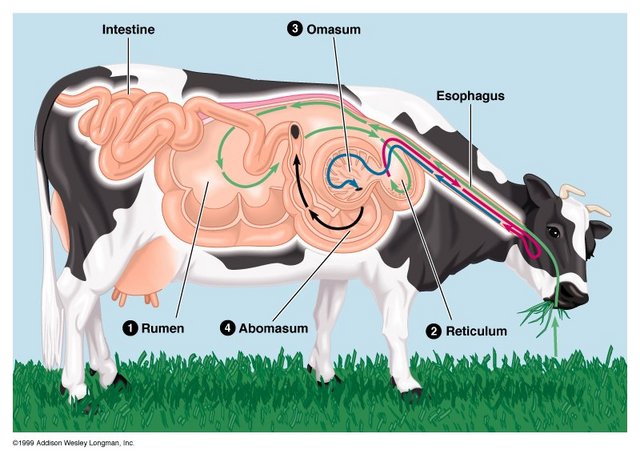Feeding and Digestion
Mammals are heterotrophs - they obtain food from other organisms. They are chunk feeders, ingesting large amounts of food at a time. They are either carnivores (meat & insect eaters), herbivores (plant eaters), or omnivores (meat and plant eaters).
Carnivores have canines to grip prey and tear flesh. They have few molars as they chew very little. The hydrochloric acid secreated by a carnivore's stomach is much more acidic than a herbivore's. This is to kill harmful bacteria which is more prevalent in meat. A carnivore's small and large intestines are shorter than a herbivore's in comparison to body height. The reason for this is because their meal is high in nutrition and is absorbed easily. The caecum is small and not very useful, because it's function is to break down cellulose, which is mostly found in plant matter.
Mammals are heterotrophs - they obtain food from other organisms. They are chunk feeders, ingesting large amounts of food at a time. They are either carnivores (meat & insect eaters), herbivores (plant eaters), or omnivores (meat and plant eaters).
Carnivores have canines to grip prey and tear flesh. They have few molars as they chew very little. The hydrochloric acid secreated by a carnivore's stomach is much more acidic than a herbivore's. This is to kill harmful bacteria which is more prevalent in meat. A carnivore's small and large intestines are shorter than a herbivore's in comparison to body height. The reason for this is because their meal is high in nutrition and is absorbed easily. The caecum is small and not very useful, because it's function is to break down cellulose, which is mostly found in plant matter.
On the contrast, herbivores need a greater deal of time to absorb and digest their meal. Instead of canines, herbivores have molars to help them grind plant matter. Incisors are only present in the lower jaw. Ruminants such as sheep and cows have more complex stomachs - with four chambers - compared to horses and rabbits. Ruminants have a special chamber called a rumen, in which billions of bacteria help break down cellulose. After the food first travels to the rumen, the food travels back towards the mouth to be chewed again. The food is now known as cud. The cud then goes down to the other chambers where digestion continues. Non-ruminants don't have this process so they excrete a lot more undigested matter and need to eat often. The primary bacteria which break down cellulose in non-ruminants is located in the colon.
Omnivores, consuming animal and plant matter, share similaries with both carnivores and herbivores. For example, they possess canines and molars. However, their digestive tract is more similar to a carnivore's.


